Cameos jewels of Ancient Rome
When the Senate granted Pompey the Great the Triumph for defeating Mithridates, behind the chariot of the winner the Roman citizens could admire the enormous treasure of the Pontus King that also included "precious stones to fill nine tables", as Pliny Senior tells. The Roman aristocracy was conquered by those precious stones and many were those who began to collect them, first of all Scaurus, son of the wife of Sulla, but also Caesar and later Augustus.
In the city of Rome, precious stones were already worked from the 3rd century. B.C. but it was only after the conquest of the East by Rome that the gems cutters of the eastern courts moved to the capital of the new power.
In the III BC the glyptics had spread in the wake of the Etruscan and grecian models of Magna Graecia among patrician families and knights passionate about Greek mythology and local legends who did make pendants and rings. In the 2nd century BC C. cameos of eastern origin began to arrive in Rome and Italic production began to adopt Hellenistic models in subjects; in the first century B.C. arrived the oriental “gemmari” ( gem cutters) that were true artists, the stones that mostly used were the sardonic, the agate and the onyx.
The cameos found to date have been attributed by scholars to 28 artists, all Greek; Pliny tells of "the one who sculpted a perfectly resembling portrait of the divine Augustus, used from then on by the emperors as a seal, namely Dioscurides". Pliny the Elder dedicated an entire book, the XXXVII of the Naturalis Historia, to the treatment of gems and precious stones.
For the Romans, cameos were objects reserved almost exclusively to matrons who came to make excessive use of them, so much so that Ovid complained “We let ourselves be seduced by refinement; everything is covered with gold and gems and the girl is a minimal part of herself. Often you will wonder where is, among many ornaments, whom you love. "
The men wore only one jewel, the ring, a symbol of power and social distinction on which the habit of setting decorative and carved cameos, that could be used as seals, invaded. The first use of appropriately carved precious stones was just as a seal; the "signum" was used to sign important documents and was preferred to the signature also for a practical purpose, because not everyone knew reading.
Many famous men of Rome had a ring in which their distinctive "signum" was carved; famous the seal of Sulla where "the engraving represented Bocchus who delivered Jugurtha and Sulla who took him", or that of Pompey in which a lion sword-wielding was impressed. Pliny tells how the choice of the seal had to be careful not to create confusion or irony and reports the example of Augustus who ".. at the beginning of his principality he used a seal with the sphinx: he had found two seals of this type among the rings of his mother who began to use until he was informed that the recipients joked that the Sphinx "carried Enigmas"; later, to avoid the ironies provoked by the sphinx, he used a seal with the effigy of Alexander the Great. "
The gem-seal, in addition to being a legal instrument, it was also a means of political propaganda: the motif that was engraved represented its owner and its aspirations. Augustus also made it an instrument to affirm the royal prerogatives of his dynasty. In the Augustan age, in fact, representations were made on large and multi-layered stones with many characters placed on different levels as in the large cameo called "Apotheosis of the Emperor Augustus" where the whole Julio-Claudian family is represented in 23 BC. , during the reign of Tiberius, with positions that also reflect the line of succession and which, according to modern interpretations of the characters represented, reopens many questions on family and dynastic dynamics.
Today the cameo is known as the Gran Camee de France and is kept at the Cabinet des Medailles of the Bibliothèque Nationale in Paris: it is the largest known cameo and is of incomparable beauty. It was made on a sardonyx, a white quartz that turns red is due to the presence of iron residues, coming from India in five layers, measuring 31 cm in height by 26.5 cm in width. As evidence of the importance of the jewel is its history; it remained among the treasures of the emperors on the Palatine until Constantine took it to its new capital, Constantinople where it then remained until the mid-1200s when Baldwin II, fleeing the city, took it with him and offered it to Louis IX who bought it by letting him enter so among the treasures of France ...
Sign up and read the rest of the article!
by M.L. ©ALL RIGHTS RESERVED (Ed 1.0 - 14/02/2020)
Gallery

Dioscurides gem cutter - Cameo of Augustus, 1st cent. B.C. - National Library of France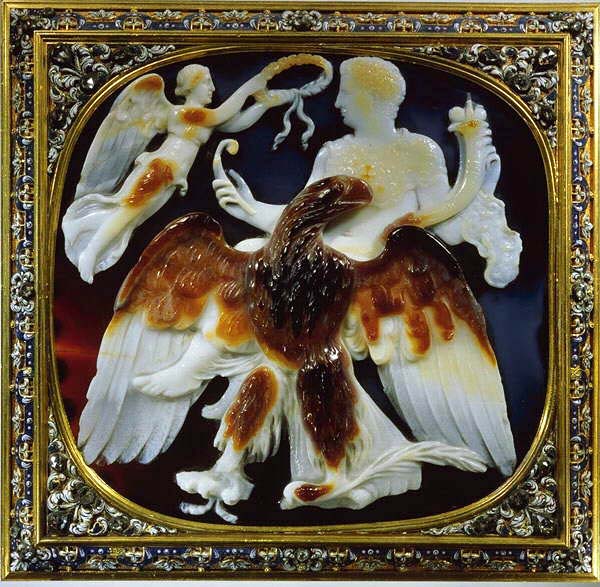
Cameo depicting the apotheosis of Claudius 1st century A.D., attributed to Skylas - Cabinet des Medailles, Paris Fr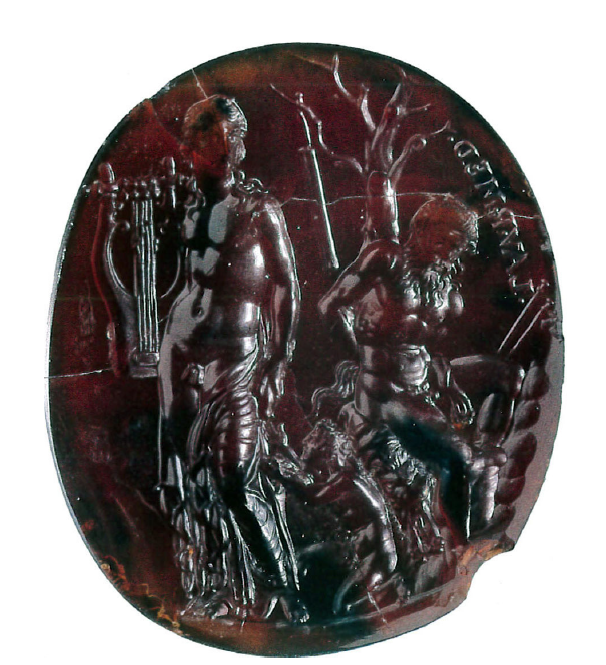
Seal of Nero - Attributed to Dioscurides, carnelian with Apollo, Olympus and Marsyas - Medici Collection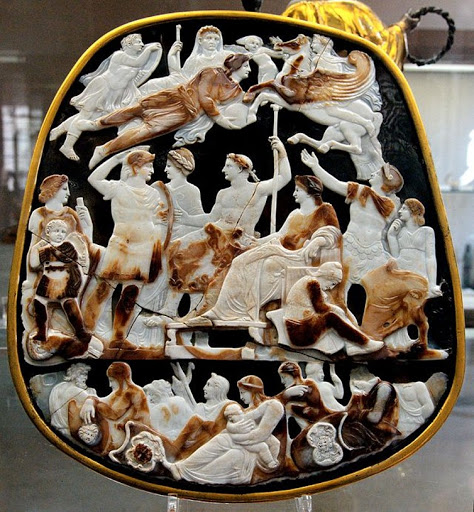
Gran Camee de France – Apotheosis of Emperor Augustus, 23 AD– Cabinet des Medailles, Paris Fr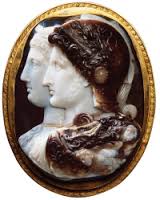
Augustus Group, early 1st century AD - found in 1785 in the Priscilla Cemetery - Louvre Museum, Paris Fr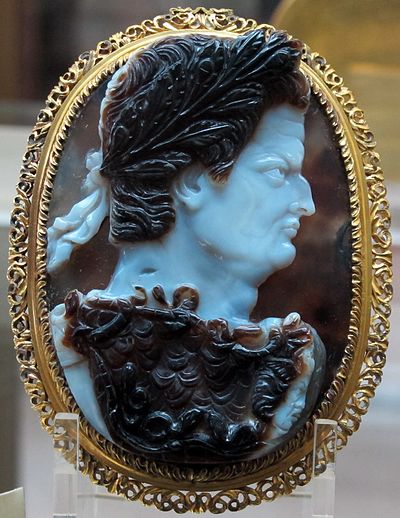
Cameo depicting Galba, 1st century A.D. - Belonged to the painter Rubens
Cameo depicting Antonia Minor. 37 AD - Bibliotheque Nationale, Paris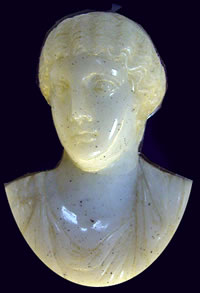
Cameo depicting Messalina, wife of Claudius, 47 A.D. - Bibliotheque Nationale, Paris






